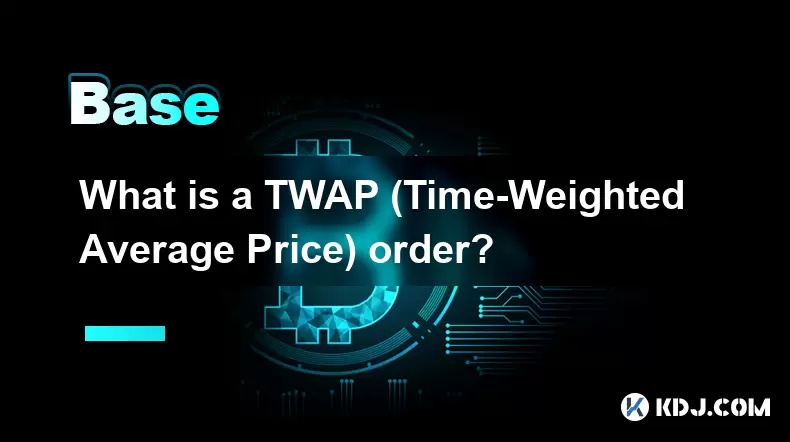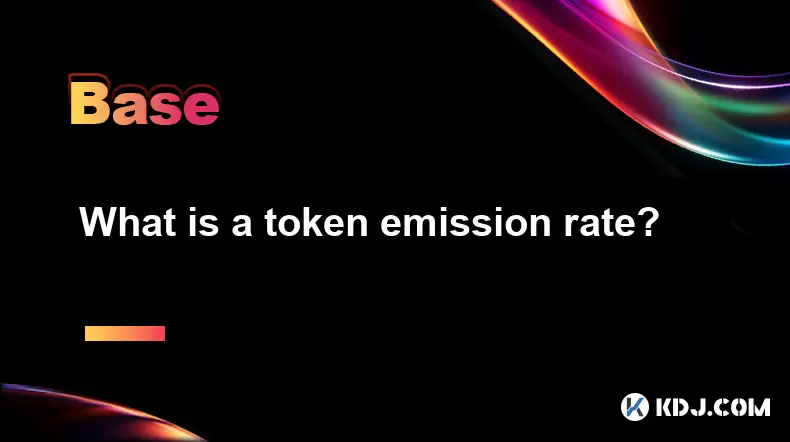-
 Bitcoin
Bitcoin $108,562.4295
0.46% -
 Ethereum
Ethereum $2,533.9553
1.52% -
 Tether USDt
Tether USDt $1.0002
-0.01% -
 XRP
XRP $2.2542
2.23% -
 BNB
BNB $662.4567
1.48% -
 Solana
Solana $151.4114
3.48% -
 USDC
USDC $0.9999
0.00% -
 TRON
TRON $0.2860
0.91% -
 Dogecoin
Dogecoin $0.1685
3.72% -
 Cardano
Cardano $0.5809
1.63% -
 Hyperliquid
Hyperliquid $39.2916
1.85% -
 Sui
Sui $2.8874
0.85% -
 Bitcoin Cash
Bitcoin Cash $496.5801
2.72% -
 Chainlink
Chainlink $13.3582
2.48% -
 UNUS SED LEO
UNUS SED LEO $9.0279
0.07% -
 Avalanche
Avalanche $18.0773
2.30% -
 Stellar
Stellar $0.2426
3.05% -
 Toncoin
Toncoin $2.9086
6.01% -
 Shiba Inu
Shiba Inu $0.0...01170
2.97% -
 Hedera
Hedera $0.1587
3.47% -
 Litecoin
Litecoin $87.4596
1.13% -
 Monero
Monero $317.0425
0.73% -
 Polkadot
Polkadot $3.3778
1.90% -
 Dai
Dai $0.9999
-0.01% -
 Ethena USDe
Ethena USDe $1.0001
-0.01% -
 Bitget Token
Bitget Token $4.4095
0.63% -
 Uniswap
Uniswap $7.3593
6.80% -
 Pepe
Pepe $0.0...09910
3.64% -
 Aave
Aave $274.7388
2.68% -
 Pi
Pi $0.4607
0.48%
What is a TWAP (Time-Weighted Average Price) order?
TWAP orders help traders execute large crypto trades by splitting them into smaller, time-based intervals to reduce market impact and achieve a fair average price.
Jul 07, 2025 at 06:21 am

Understanding TWAP Orders in Cryptocurrency Trading
In the world of cryptocurrency trading, various order types exist to help traders execute their strategies more efficiently. One such advanced order type is the TWAP (Time-Weighted Average Price) order. This mechanism allows traders to break large trades into smaller chunks and execute them at regular intervals over a specified time period. The goal is to minimize market impact and achieve an average execution price close to the prevailing market value.
What makes TWAP orders unique is their ability to spread trades evenly across time rather than volume or volatility. Unlike other algorithms like VWAP (Volume Weighted Average Price), which considers trade volume, TWAP focuses purely on time intervals, making it ideal for markets where volume data may be unreliable or manipulated.
How Does a TWAP Order Work?
A TWAP order operates by slicing a large order into smaller, equal-sized portions that are executed at fixed time intervals until the full order is completed. For example, if a trader wants to buy 10,000 units of a cryptocurrency over two hours, the system might divide this into ten 1,000-unit trades executed every 12 minutes.
- The trader sets the total quantity, duration, and time intervals.
- The algorithm divides the order into equal parts based on the chosen time window.
- Each sub-order is placed at regular intervals, regardless of market conditions.
- This reduces slippage and avoids sudden price movements caused by large trades.
This method ensures that no single transaction significantly affects the market price, especially useful in volatile crypto markets where large orders can trigger sharp price swings.
Use Cases for TWAP Orders in Crypto Markets
TWAP orders are particularly valuable in environments with high volatility and lower liquidity. Institutional traders often use TWAP when entering or exiting large positions without drawing attention or distorting prices.
- Executing large buys/sells across decentralized exchanges where order books may be thin.
- Avoiding front-running by breaking up orders into smaller, less noticeable trades.
- Managing risk in arbitrage strategies between different exchanges.
- Reducing execution costs in low-volume altcoins where sudden demand can spike prices.
TWAP helps maintain discretion and efficiency in trading strategies, especially when dealing with assets that have unpredictable order book depth.
Differences Between TWAP and Other Algorithmic Orders
While TWAP shares similarities with other algorithmic trading tools like VWAP and POV (Percentage of Volume), its time-based approach distinguishes it from these methods.
- TWAP uses fixed time intervals; VWAP adjusts based on historical volume data.
- VWAP aims to match volume-weighted prices; TWAP targets time-weighted averages.
- POV executes a percentage of current volume; TWAP ignores volume entirely.
In crypto markets, where volume can be easily manipulated or misreported, TWAP’s reliance on time rather than volume makes it more robust and predictable in execution.
Implementing TWAP Orders on Crypto Platforms
Several platforms and protocols now support TWAP orders either natively or via third-party integrations. Some centralized exchanges offer TWAP as part of their advanced trading tools, while decentralized finance (DeFi) protocols use TWAP mechanisms for oracle pricing and trade execution.
- On centralized exchanges: Traders access TWAP through API bots or built-in algo-trading interfaces.
- In DeFi: TWAP oracles are used to calculate fair prices over time instead of relying on spot prices.
- Custom bots: Developers can build TWAP logic using Python or JavaScript with exchange APIs.
Using TWAP effectively requires understanding the platform's configuration options, including interval settings, order size, and cancellation policies.
Frequently Asked Questions
Q: Can TWAP orders be canceled or modified once initiated?
Yes, depending on the exchange or platform. Most systems allow users to cancel pending sub-orders but may not permit modifying the original parameters after initiation.
Q: Is TWAP suitable for all types of cryptocurrencies?
TWAP works best for assets with moderate to high volatility where executing large orders at once could cause significant price movement. It is especially useful in thinly traded or altcoin markets.
Q: How does TWAP handle sudden price spikes during execution?
Since TWAP doesn’t adjust for price changes, some sub-orders may execute at unfavorable prices. However, spreading trades over time helps average out these fluctuations.
Q: Are there any risks associated with TWAP orders?
Yes, potential risks include partial fills in illiquid markets and exposure to short-term price manipulation. Users should monitor order status and adjust parameters accordingly.
Disclaimer:info@kdj.com
The information provided is not trading advice. kdj.com does not assume any responsibility for any investments made based on the information provided in this article. Cryptocurrencies are highly volatile and it is highly recommended that you invest with caution after thorough research!
If you believe that the content used on this website infringes your copyright, please contact us immediately (info@kdj.com) and we will delete it promptly.
- Elon Musk, Andrew Yang, and Polymarket: What's the Buzz?
- 2025-07-07 10:30:12
- Lightchain AI's Bonus Round: The Final Chance Before Mainnet & Ecosystem Tools
- 2025-07-07 10:30:12
- TON Foundation, UAE Golden Visa, and Toncoin Staking: A New Chapter in Crypto Residency?
- 2025-07-07 10:50:12
- Altcoin Prices, Institutional Investors, and the Ethereum Rotation: What's the Deal?
- 2025-07-07 10:50:12
- TON Coin, Golden Visa, and UAE Denial: What's the Real Deal?
- 2025-07-07 10:55:12
- PEPE's Bullish Trend: Riding the 50% Gain Wave?
- 2025-07-07 10:55:12
Related knowledge

What is a user-generated content (UGC) NFT platform?
Jul 04,2025 at 01:49pm
Understanding the Concept of a UGC NFT PlatformA user-generated content (UGC) NFT platform is a digital marketplace or ecosystem where users can create, mint, and trade non-fungible tokens (NFTs) that represent ownership of original digital content they produce. Unlike traditional NFT platforms where creators often include professional artists or develo...

What is composability in DeFi?
Jul 06,2025 at 04:07pm
Understanding the Concept of Composability in DeFiComposability in DeFi refers to the ability of decentralized finance protocols and smart contracts to interact seamlessly with one another, much like building blocks that can be combined in various ways to create new financial products and services. This concept is a core innovation within the DeFi ecosy...

What is a "crypto primitive"?
Jul 05,2025 at 10:14pm
Defining the Concept of a Crypto PrimitiveIn the context of blockchain and cryptocurrency, a crypto primitive refers to a fundamental building block or foundational element used in constructing decentralized systems and cryptographic protocols. These primitives are essential for enabling secure transactions, consensus mechanisms, and smart contract exec...

What is a fair launch?
Jul 05,2025 at 07:31pm
Understanding the Concept of a Fair LaunchA fair launch refers to the release of a cryptocurrency or blockchain project in a manner that ensures equal opportunity for all participants. Unlike traditional token launches, which may involve private sales, venture capital funding, or pre-mining, a fair launch emphasizes transparency and decentralization. In...

What is a token emission rate?
Jul 07,2025 at 02:51am
Understanding the Basics of Token Emission RateIn the realm of cryptocurrencies, token emission rate refers to the speed or frequency at which new tokens are generated and released into circulation within a blockchain network. This concept is fundamental in understanding how certain blockchain ecosystems manage inflation, incentivize participants, and m...

What is a cliff in tokenomics?
Jul 05,2025 at 07:18pm
Understanding the Concept of a Cliff in TokenomicsIn the world of cryptocurrency and blockchain, tokenomics plays a pivotal role in shaping the economic behavior of a digital asset. One of the key mechanisms used to manage token distribution is known as a cliff. This concept is commonly applied in projects that include vesting schedules for tokens, espe...

What is a user-generated content (UGC) NFT platform?
Jul 04,2025 at 01:49pm
Understanding the Concept of a UGC NFT PlatformA user-generated content (UGC) NFT platform is a digital marketplace or ecosystem where users can create, mint, and trade non-fungible tokens (NFTs) that represent ownership of original digital content they produce. Unlike traditional NFT platforms where creators often include professional artists or develo...

What is composability in DeFi?
Jul 06,2025 at 04:07pm
Understanding the Concept of Composability in DeFiComposability in DeFi refers to the ability of decentralized finance protocols and smart contracts to interact seamlessly with one another, much like building blocks that can be combined in various ways to create new financial products and services. This concept is a core innovation within the DeFi ecosy...

What is a "crypto primitive"?
Jul 05,2025 at 10:14pm
Defining the Concept of a Crypto PrimitiveIn the context of blockchain and cryptocurrency, a crypto primitive refers to a fundamental building block or foundational element used in constructing decentralized systems and cryptographic protocols. These primitives are essential for enabling secure transactions, consensus mechanisms, and smart contract exec...

What is a fair launch?
Jul 05,2025 at 07:31pm
Understanding the Concept of a Fair LaunchA fair launch refers to the release of a cryptocurrency or blockchain project in a manner that ensures equal opportunity for all participants. Unlike traditional token launches, which may involve private sales, venture capital funding, or pre-mining, a fair launch emphasizes transparency and decentralization. In...

What is a token emission rate?
Jul 07,2025 at 02:51am
Understanding the Basics of Token Emission RateIn the realm of cryptocurrencies, token emission rate refers to the speed or frequency at which new tokens are generated and released into circulation within a blockchain network. This concept is fundamental in understanding how certain blockchain ecosystems manage inflation, incentivize participants, and m...

What is a cliff in tokenomics?
Jul 05,2025 at 07:18pm
Understanding the Concept of a Cliff in TokenomicsIn the world of cryptocurrency and blockchain, tokenomics plays a pivotal role in shaping the economic behavior of a digital asset. One of the key mechanisms used to manage token distribution is known as a cliff. This concept is commonly applied in projects that include vesting schedules for tokens, espe...
See all articles

























































































